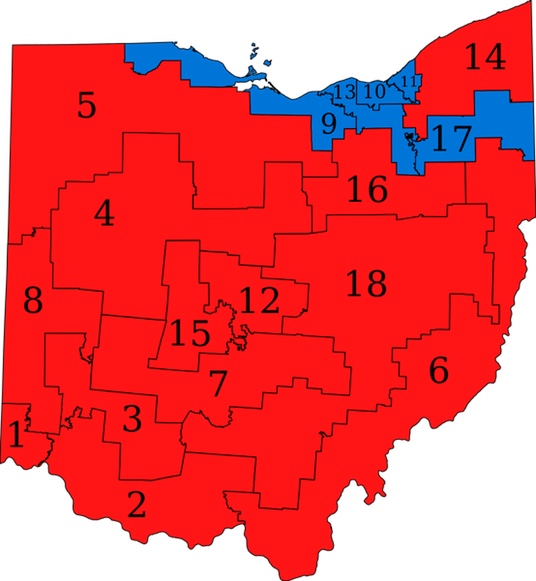
On May 8 (or earlier, if you’re early voting), you will find Issue 1 on your ballot, to create a new, fairer and more balanced way to draw congressional district lines. Please vote YES. If you have heard people tell you to hold out for something more perfect, ignore them. Making the system better doesn’t mean it’s the final word. Our system of drawing the congressional map is beyond broken and we need to change it
Perhaps you’ve wondered why Congress never gets anything done and when they do, it’s something that doesn’t benefit the average person. Or why something with overwhelming support of the public — strengthened background checks for gun purchases, to name one issue in the news right now — not only doesn’t get passed but Congress often contemplates the opposite (making concealed carry laws portable over state lines which means all states have to abide by whichever state has the weakest laws).
One of the answers is “gerrymandering.” To put it simply, that means drawing district lines that benefit the party in power at the time the lines are drawn and suppressing the voices of the opposite party — for instance, by packing all members in of the minority party into a handful of districts which it then carries by margins such as 85% and leaving all the rest to be controlled by the majority party. Welcome to Ohio congressional districts.
Currently, Ohio has 16 congressional districts (it’s expected to lose one in the next census). Ohio’s votes for Congress across the state almost always break down close to 50/50. In the first election with this district map, Democrats actually won MORE votes statewide. Yet the result was 12 Republicans and four Democrats sent to Congress.
And the races are never close. In most districts, the winner carries the election by 25/30/40 points or more. What this means is that the primary is the real election and since voters in primaries tend to be more on the fringe than general election voters, candidates are mostly worried about whether they are ultra-conservative or ultra-progressive enough to not get a challenge from their right/left. For instance, until the 2012 election OH-12 was represented by hardcore conservative Jean Schmidt. She was challenged in the primary and ousted by the even MORE conservative Brad Wenstrup.
The result is the very polarized, do-nothing Congress we see now, where input from the minority party is not sought and what most voters want is totally irrelevant. (Gerrymandering isn’t the only reason, but it’s a major one).
The new system created by Issue 1 isn’t perfect by any means, and yes, a party in power determined to do mischief still could do so, although not as much. More transparency, public input and more buy-in from the minority party are required by Issue 1. If you’d like to know all the details of how it will work, go here: fairdistrictsohio.org.
But please vote YES.